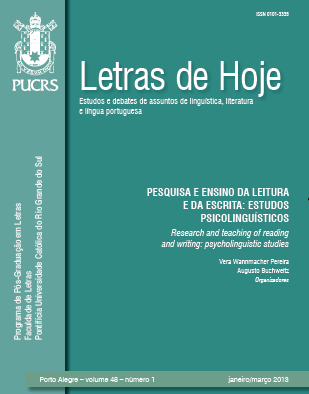The demystification of global method
Keywords:
Global method, Refutation, Neuroscience, Biological constraints, Brain architectureAbstract
I propose in this article, based on recent findings from neuroscience, demystifying the global method of learning how to read, which still boasts many supporters in Brazil, despite its official condemnation in countries like France. I trace a brief history of its emergence and unfolding, exemplifying the use in Brazil with some booklets. I present, then, empirical evidence from neuroscience about the biological constraints imposed to the retina for capturing more than twelve characters of the printed line during one fixation; in addition, I explain how the brain specialized region, called left ventral occipital-temporal one, processes written information, demonstrating that the recognition of the word does not occur by configuration. Adopting phonic methods does not imply ignoring the existence and necessity of top-down processing in parallel, since reading and learning are anchored in previous linguistic knowledge, driven to support the recognition of the written word. At the end, brief comments about phonic methods.Downloads
Downloads
Published
How to Cite
Issue
Section
License
Copyright
The submission of originals to Letras de Hoje implies the transfer by the authors of the right for publication. Authors retain copyright and grant the journal right of first publication. If the authors wish to include the same data into another publication, they must cite Letras de Hoje as the site of original publication.
Creative Commons License
Except where otherwise specified, material published in this journal is licensed under a Creative Commons Attribution 4.0 International license, which allows unrestricted use, distribution and reproduction in any medium, provided the original publication is correctly cited.






